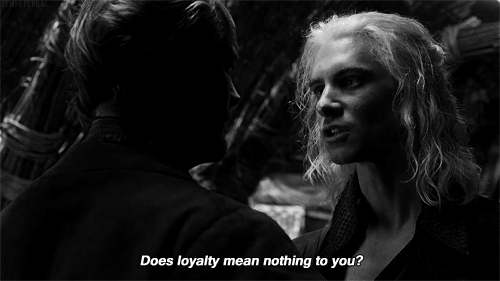In episode one of The BIG Simple webinar series, Tamsen Webster delved into her Red Thread method with host Jay Acunzo, explaining how content marketers can use this framework to better understand their customers and align messaging accordingly.
In episode two, we welcomed Andrew Davis, who gave us the lowdown on “The Loyalty Loop” and how content teams can activate this simple idea to keep customers coming back, while fending off advances from the competition.
Some people are just magnetic, and Andrew is one of them. If you’ve ever met him, or seen him speak at a conference, then you know what I’m talking about. He’s got a big personality and an amazing sense of humor. His hilarious opening keynote at the latest Content Marketing World was one of the clear highlights.
When he joined The BIG Simple, his focus was on helping make our brands more magnetic, by ensuring that strategic content planning doesn’t stop accounting for customers after the sale.
Learning the Loyalty Loop
“You serve your audience and subscribers first,” Andrew asserts, adding that by focusing solely on acquiring new eyeballs, new followers and new subscribers, marketers are doing themselves a disservice. Continually offering value to those who’ve already jumped on board is vitally important.
In doing so, we get those existing subscribers talking, and encouraging others to sign up. (Framing things from the customer’s point of view was a central point in Tamsen’s episode.) This type of unbiased peer advocacy is far more resonant than any way a brand can market itself. As examples of this dynamic in action, Andrew points to podcasts that leverage user reviews for promotion, or movie posters that feature blurbs from critics.
The Loyalty Loop, then, is about delivering exceptional experiences with consistency to build a sustained and ever-growing content marketing engine. There was an initial moment of inspiration that prompted someone to subscribe, or follow, or buy; your content strategy should be aimed at perpetually creating those moments of inspiration.
Andrew readily admits that he didn’t coin the term “Loyalty Loop,” having come across it in research from McKinsey and Company. But he has really made it his own with a series of YouTube videos and a well defined four-step process that buyers go through.
Four Steps of the Loyalty Loop
To provide some real-world context, Andrew references a past experience where he opened a letter from Nissan informing him that his lease was going to to expire in 30 days. Drawing from that example, here’s how he lays out the loop:
#1: Moment of Inspiration
He opens the letter and realizes that his lease is coming up. Suddenly his mind is budding with possibilities as he’s struck with the reality that he’s going to need to look for a new car. This launches him on a journey.
#2: Trigger
The question Andrew asked himself to set this journey into motion. In this case: “What car am I gonna buy?”
#3: Initial Consideration Set
The next time Andrew hits the road, he’s looking around at all the other cars out there on the road. As he moves into the active evaluation period, he starts asking his friends about their cars, searching review sites online, etc.
#4: Moment of Commitment
Andrew buys a car. In this case, it was a not a Nissan. Why? Because the brand failed to capitalize on an opportunity to shore up his loyalty.
When they sent him the letter informing him his lease was set to expire, did they deliver a great experience? Did they offer him a deal if he comes down to the dealership to get a newer and nicer Nissan?
Nope. They let him lapse into that active evaluation phase, and another company captured his business. The Loyalty Loop is all about avoiding this outcome of relegation.
How Can Your Content Strategy Incorporate the Loyalty Loop?
“Start by thinking about the next person that subscribes to your content,” Andrew suggests. “First, make a list of all the things you do after they make that commitment. Then I want you to go to two other competitors in the marketplace, and see what they do. Anything that marries up on those lists, I want you to X them out.”
Now, create a third column with unique new ideas.
“It’ll force you to think about new and innovative ways to catch people after their moment of commitment.”
By nature, these actions need to be timely and responsive, which can make them a little bit difficult to plan around. But as you look at your content calendar, search for opportunities to take advantage of the “honeymoon phase” (that brief period after a moment of commitment where your brand is freshly on a person’s mind) and strengthen this bond.

When someone subscribes to your newsletter, what are you doing to delight them?
When someone comments thoughtfully on your blog post, how are you validating their time and effort?
When someone makes a purchase from your company, how are you setting into motion the Loyalty Loop so they’ll be inspired to do so again (and tell their friends)?
How does your brand differentiate itself from competitors through its content strategy as it applies to new customers, new subscribers and new followers?
The Loyalty Loop is a mindset that you can instill throughout your content mix, be it social, email, blogs or other assets aiming to connect with your target audience. Effectively executing this model requires smart planning, tight collaboration and relentless research.
For help aligning your team around such focused initiatives, request a demo from DivvyHQ and we’ll show how our platform makes it happen. And for guidance in taking the next step with your content strategy, make sure check out episode 3 (now ON DEMAND), in which we’ll hear from Jay Baer about “Talk Triggers” and how they can turn your customers into volunteer marketers. Enjoy the show!